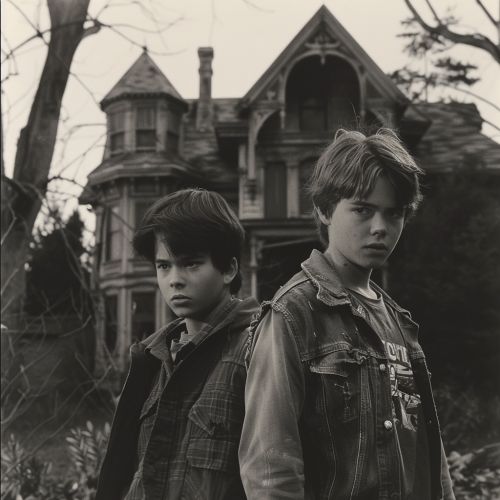The Hardy Boys
Introduction
The Hardy Boys, Frank and Joe Hardy, are fictional characters who appear in various mystery series for children and teenagers. They were created by Edward Stratemeyer, the founder of the Stratemeyer Syndicate, and have been published under the pseudonym Franklin W. Dixon. The series has been a staple of juvenile literature since its debut in 1927, captivating generations of readers with its tales of adventure, mystery, and detective work.
Historical Background
The Hardy Boys series was conceived by Edward Stratemeyer, who was inspired by the success of his earlier series, such as the Rover Boys and the Bobbsey Twins. Stratemeyer outlined the characters and plotlines, which were then fleshed out by various ghostwriters. The first three books, "The Tower Treasure," "The House on the Cliff," and "The Secret of the Old Mill," were published in 1927 and written by Leslie McFarlane, one of the most notable ghostwriters for the series.
Character Development
Frank and Joe Hardy are the teenage sons of Fenton Hardy, a famous private detective. Frank, the elder brother, is 18 years old, while Joe is 17. They live in the fictional town of Bayport, where they attend high school and assist their father in solving various mysteries. Frank is often depicted as the more analytical and methodical of the two, while Joe is more impulsive and action-oriented. Their complementary skills make them an effective team.
Literary Style and Themes
The Hardy Boys series is characterized by its straightforward, action-driven narrative style. The books are written in the third person and often feature cliffhanger endings to chapters, which keep readers engaged. Common themes include the triumph of good over evil, the importance of family and friendship, and the value of perseverance and courage.
Publication History
The original Hardy Boys series, known as the "Hardy Boys Mystery Stories," ran from 1927 to 2005 and consisted of 190 volumes. In 1959, the series underwent a significant revision to modernize the language and remove racial stereotypes. This revised series is often referred to as the "Digest" series. In addition to the main series, several spin-offs have been published, including "The Hardy Boys Casefiles," "The Hardy Boys: Undercover Brothers," and "The Hardy Boys Adventures."
Cultural Impact
The Hardy Boys have had a significant impact on popular culture. They have been adapted into various media, including television shows, comic books, and video games. The characters have also been referenced in numerous other works of fiction. The series has inspired many young readers to develop an interest in detective fiction and has contributed to the genre's popularity.
Ghostwriters and the Stratemeyer Syndicate
The Stratemeyer Syndicate employed numerous ghostwriters to produce the Hardy Boys books. Leslie McFarlane, who wrote the first 21 volumes, is perhaps the most well-known. Other notable ghostwriters include John Button, Andrew Svenson, and Harriet Adams, Stratemeyer's daughter, who took over the Syndicate after his death in 1930. The use of ghostwriters allowed the Syndicate to produce a large number of books quickly, maintaining a consistent style and quality.
Critical Reception
The Hardy Boys series has received mixed reviews from critics. While some praise the books for their engaging plots and positive moral messages, others criticize them for their formulaic structure and lack of literary depth. Despite this, the series has remained popular with readers and has sold millions of copies worldwide.
Adaptations
The Hardy Boys have been adapted into several television series, including the 1969 animated show "The Hardy Boys," the 1977 live-action series "The Hardy Boys/Nancy Drew Mysteries," and the 2020 Hulu series "The Hardy Boys." They have also appeared in comic books, such as the "Hardy Boys Graphic Novels" published by Papercutz, and video games, including "The Hardy Boys: The Hidden Theft."
Influence on Detective Fiction
The Hardy Boys series has had a lasting influence on the detective fiction genre. It has inspired numerous other series, such as "Nancy Drew," "The Three Investigators," and "Encyclopedia Brown." The success of the Hardy Boys also paved the way for other juvenile detective series and contributed to the genre's enduring popularity.
Modern Interpretations
In recent years, the Hardy Boys have been reimagined for contemporary audiences. The "Hardy Boys Adventures" series, launched in 2013, features updated storylines and modern technology. The characters have also been given more depth and complexity, addressing contemporary issues and appealing to a new generation of readers.
Conclusion
The Hardy Boys have been a beloved fixture of juvenile literature for nearly a century. Their adventures have captivated generations of readers and have left a lasting impact on the detective fiction genre. As the series continues to evolve, it remains a testament to the enduring appeal of mystery and adventure.


